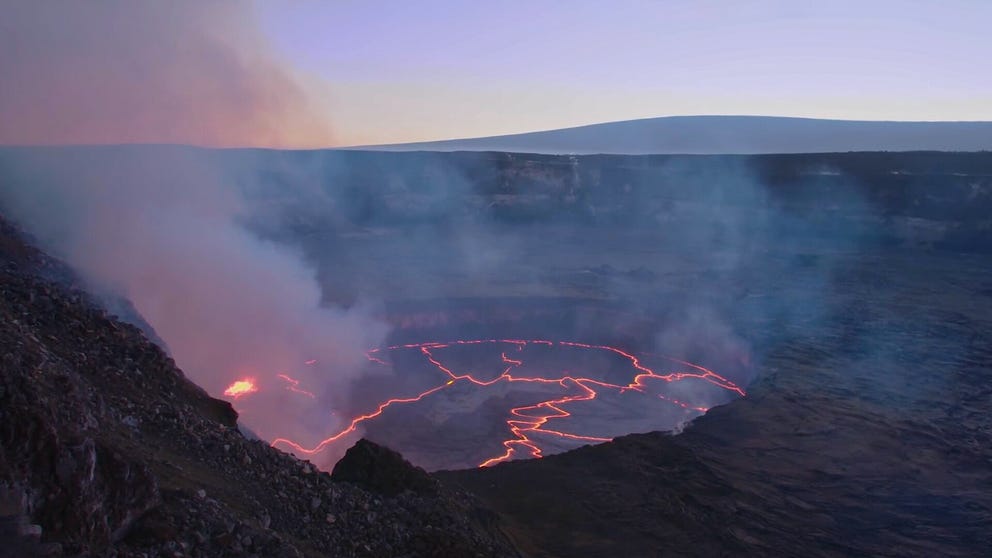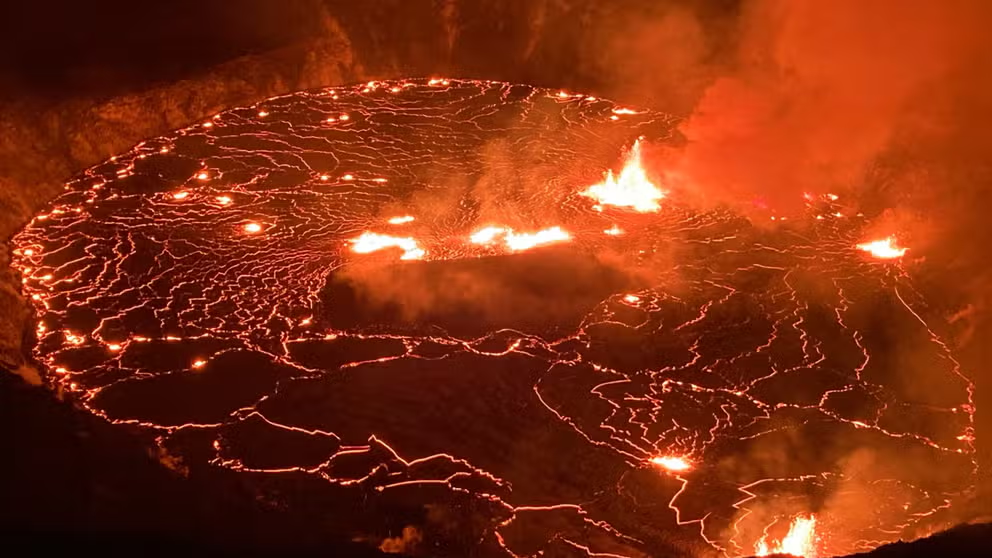Heavy rain triggered destructive 2018 Kilauea Volcano eruption, study suggests
May 3 marks the fifth anniversary of when Hawaii’s Kilauea volcano erupted, spewing lava into a neighborhood that was said to change the island forever. A new study suggests that heavy rain triggered the massive event.
Kilauea eruptions: A look at the most active volcano on the planet
One of the most active volcanoes on Earth, Kīlauea is the youngest volcano on Hawaii's Big Island and a central feature of Hawai'i Volcanoes National Park.
HAWAII VOLCANOES NATIONAL PARK, Hawaii – Five years ago, Hawaii’s Kilauea Volcano erupted and spewed lava into a neighborhood and that "changed the island of Hawaii forever," according to the National Park Service. Scientists have been searching for the trigger of the "most extraordinary sequences in at least 200 years," writes authors of a new study who feel they finally found the culprit – heavy rain.
For two months in 2018, the volcano sent towering plumes of ash into the air, raining poisonous gas, toxic particles and small shards of glass down on residents of the Big Island. Lava fountains pumped molten rock across the tropical paradise and, in some places, dozens of feet deep, according to the NPS. It covered 30 miles of road and 13.7 square miles. The eruption added 875 acres of new land to the island of Hawaii.
UNDERGROUND SECRETS OF HAWAII'S MOST NOTORIOUS VOLCANOES ARE BELIEVED TO BE CONNECTED
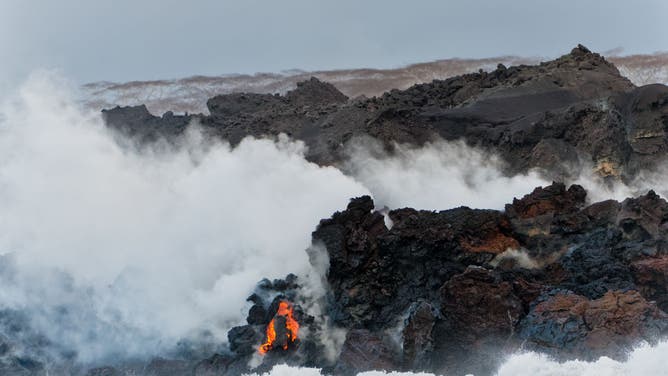
KAPOHO COAST, HI - Lava from Kilauea Volcano flows into Pacific Ocean.
(Don Smith / Getty Images)
"To get a sense of how voluminous the 2018 lava is, imagine a giant cube of lava sitting on the ground that is 0.7 miles tall—or about three times as tall as the Empire State Building," wrote the U.S. Geological Survey of the eruption.
"It turns out, there are only a handful of lava flow eruptions worldwide in the past few hundred years that have produced more than a cubic kilometer (0.24 cubic miles) of lava," the USGS continued. "We can see that the 2018 Kīlauea lava flow was among the top lava flow eruptions on Earth in recent centuries. The eruption was not only remarkable in scale for Hawaiʻi but also worldwide."
The lava destroyed 700 homes and displaced over 2,000 people, most in the Leilani Estates subdivision. Magma triggered tens of thousands of earthquakes, with the largest recording of magnitude 6.9.
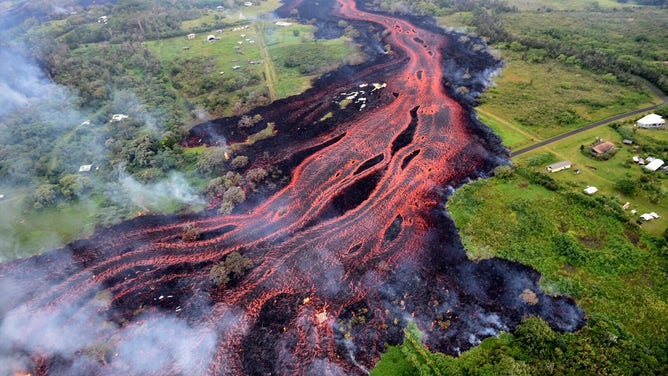
Ash plume rises from forest following a massive volcano eruption on Kilauea volcano in Hawaii. Lava is spewing 200 feet in the air.
(USGS / Handout/Anadolu Agency / Getty Images)
Blame it on the rain
Researchers of the study published in the Journal Nature poured through weather and historical eruption data and found that Kilauea is more likely to erupt after rain.
"A statistical analysis of the Kīlauea’s reported historical eruptions shows that the volcano exhibits a marked tendency towards erupting during the wettest times of the year: the onset of around 60% of reported eruptions since 1790 (including the Pu’u ‘Ō’ō eruption 1983–2018) occurred during the ‘rainy’ season, despite the fact that Kīlauea’s ‘rainy’ season is shorter than its ‘dry’ season," wrote the authors.
The authors looked at the weather before the 2018 eruption. In January, an unusual shift in the typical upper-air weather pattern sent storm after storm over Hawaii. In the first quarter of the year, satellite data showed that over 88 inches of rain fell on Kilauea. The average rain for the first quarter of the year is about 35 inches.
WATCH A VOLCANO MAKE ITS OWN WEATHER
Kilauea volcano erupting on Hawaii's Big Island
File: A recent eruption of Kilauea.
In March 2018, the pressure in the volcano started increasing, and the lava lake at the Halema’uma’u Crater started rising. This was part of the Pu’u ‘Ō’ō eruption, the longest continuous eruption for the volcano, which started 34 years before.
Then, between April 14 and 15, the record rain hit. The nearby island of Kauai received a record downpour of almost 50 inches of rain in just 24 hours. That rainfall was not only a Hawaii record but the most rain that has fallen in all of the United States in 24 hours.
The lava lake then overflowed onto the crater floor. The NPS said that over 10,000 visitors a day flocked to the sight. The USGS recorded the highest pressure in the volcano in 47 years.
WHAT IS 'PELE'S HAIR' DURING A VOLCANIC ERUPTION?
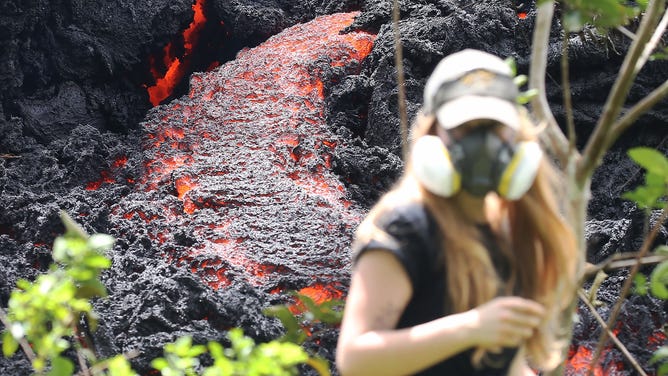
Visitors wore masks to take pictures of the lava flows.
(Mario Tama / Getty Images)
On April 30, the summit of the Pu’u ‘Ō’ō crater collapsed. That stopped the Pu’u ‘Ō’ō eruption. Within 48 hours, the lava lake started draining from the summit, according to the USGS.
The study suggests that the heavy rains that fell previously soaked into the volcanic rock, increasing pressure which weakened the rift zone or cracks in the volcano. A rift is already weak from volcanic activity. The magma from the lava lake was on the move, intruding into the weaker areas.
INCREDIBLE VIDEO SHOWS LAVA FROM HAWAII'S MAUNA LOA VOLCANO SHOOTING NEARLY 150 FEET INTO THE AIR
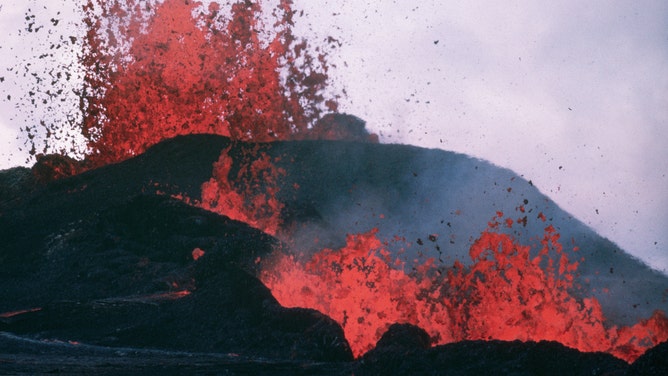
A fountain of hot lava erupts from a crater in the Kilauea East Rift.
(CORBIS / Getty Images)
The Ahu’aila’au eruption
On May 3, a fissure opened up in the Leilani Estates subdivision, starting the Ahu’aila’au eruption. The USGS recorded a magnitude 6.9 earthquake on May 4.
"As the summit adjusted to the withdrawal of magma further down in the rift zone, it caused powerful earthquakes and collapse events up top," wrote the NPS. "Every 28 hours on average, the ground within the summit caldera of Kīlauea sank. These collapses were followed by large air-borne plumes of ash."
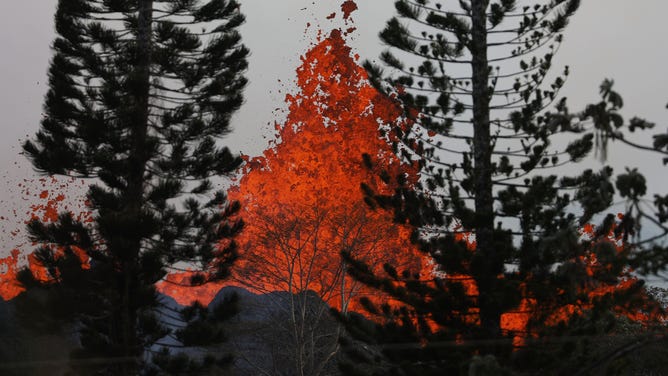
On May 17, Kilauea erupted explosively and sent a plume about 30,000 feet into the sky, according to the USGS.
(Mario Tama / Getty Images)
By the time the eruption stopped in September, the region had shaken with over 60,000 earthquakes, according to the USGS. The Halema’uma’u crater grew from 280 feet deep to 1,600 feet deep, doubling the width of the crater.
"Intrusions are approximately twice as likely to occur at Kīlauea when pore pressure is elevated, suggesting that pore pressure can act as a trigger mechanism in a critically stressed—or ‘primed’—volcanic system," wrote authors of the study.
History repeats itself
The previous "extraordinary eruption" was in May 1924, said the authors. Data shows that April rainfall was almost 20 inches more than average.
HAWAII'S MAUNA LOA VOLCANO SPEWS ‘LAVA FOUNTAIN’ OF LIQUID ROCK INTO AIR AS LAVA FLOWS SLOW
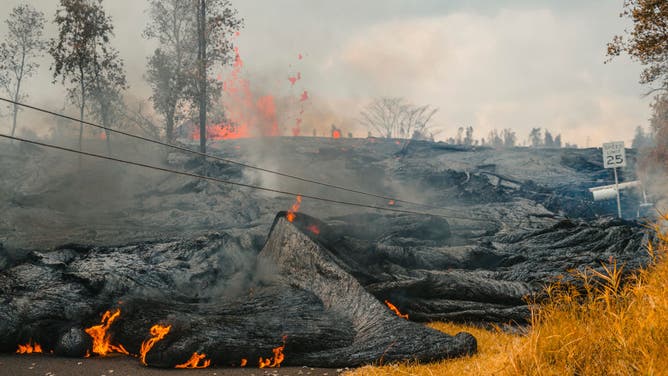
Lava flowing from one of the 24 new fissures in 2018.
(Andrew Richard Hara/Ena Media Hawaii / Getty Images)
"The 2018 eruption echoed many features of 1924 (for example, major summit explosions and a drop in lava lake level), suggesting that not only the timing of intrusions and eruptions, but also the eruptive style of Kilauea is influenced by rainfall," concluded the study.
The authors feel the findings will become ever more important in the future.
"Critically, as our climate continues to change, the occurrence of prolonged periods of extreme rainfall is predicted to increase in many parts of the world, increasing the potential for rainfall-triggered volcanic phenomena," the study stated.
Most recently, crowds flocked to Kiauea this winter when lava erupted through the Halema’uma’u crater.
